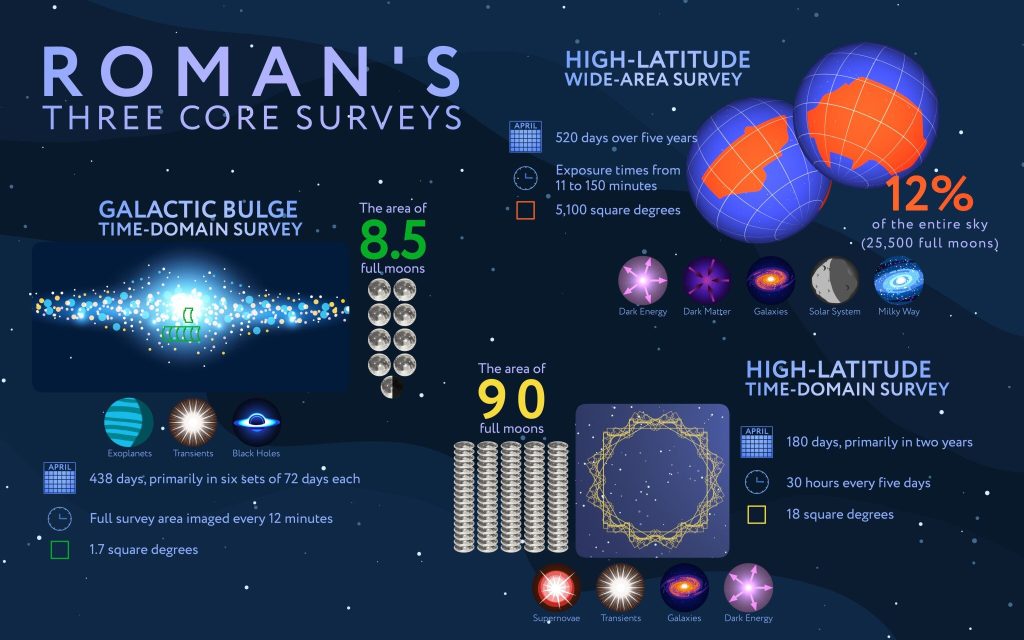Imagine a telescope in space, not just any telescope but NASA’s Nancy Grace Roman Space Telescope, on a mission to scour the skies like never before. This telescope is like a giant eye focusing on distant cosmic objects spread across vast expanses of space and time.
Gail Zasowski, from the University of Utah, explains how Roman aims to explore the universe’s evolution, dark matter, and worlds beyond our solar system. The key is to conduct surveys that have broad appeal and can answer various scientific queries. These surveys were carefully crafted by astronomers to maximize the scientific insights they can provide.
With its crystal-clear view of space and swift survey capabilities, Roman is a game-changer for astronomers. They can now investigate a wide range of topics, from our outer solar system to exploding stars and galaxies by the billions.
After gathering feedback from over 1,000 scientists worldwide, Roman has finalized its survey designs. These designs represent the collective input of a diverse community eager to explore the mysteries of the cosmos. Roman’s launch is set for 2027, with preparations at NASA Goddard in full swing.
The three main observing programs of Roman include the High-Latitude Wide-Area Survey, High-Latitude Time-Domain Survey, and Galactic Bulge Time-Domain Survey. Each program serves a unique purpose, from studying dark energy to exploring the heart of our galaxy.
The High-Latitude Wide-Area Survey delves into the nature of dark energy and how dark matter shapes our universe. The High-Latitude Time-Domain Survey focuses on cosmic objects that change over time, like exploding stars. Finally, the Galactic Bulge Time-Domain Survey offers an in-depth view of our Milky Way, uncovering hidden planets and stars.
By sharing its data openly, Roman is set to revolutionize our understanding of the universe. Launching in 2027, this space telescope promises to unlock a wealth of cosmic knowledge for scientists worldwide.
If you would like to see similar science posts like this, click here & share this article with your friends!


